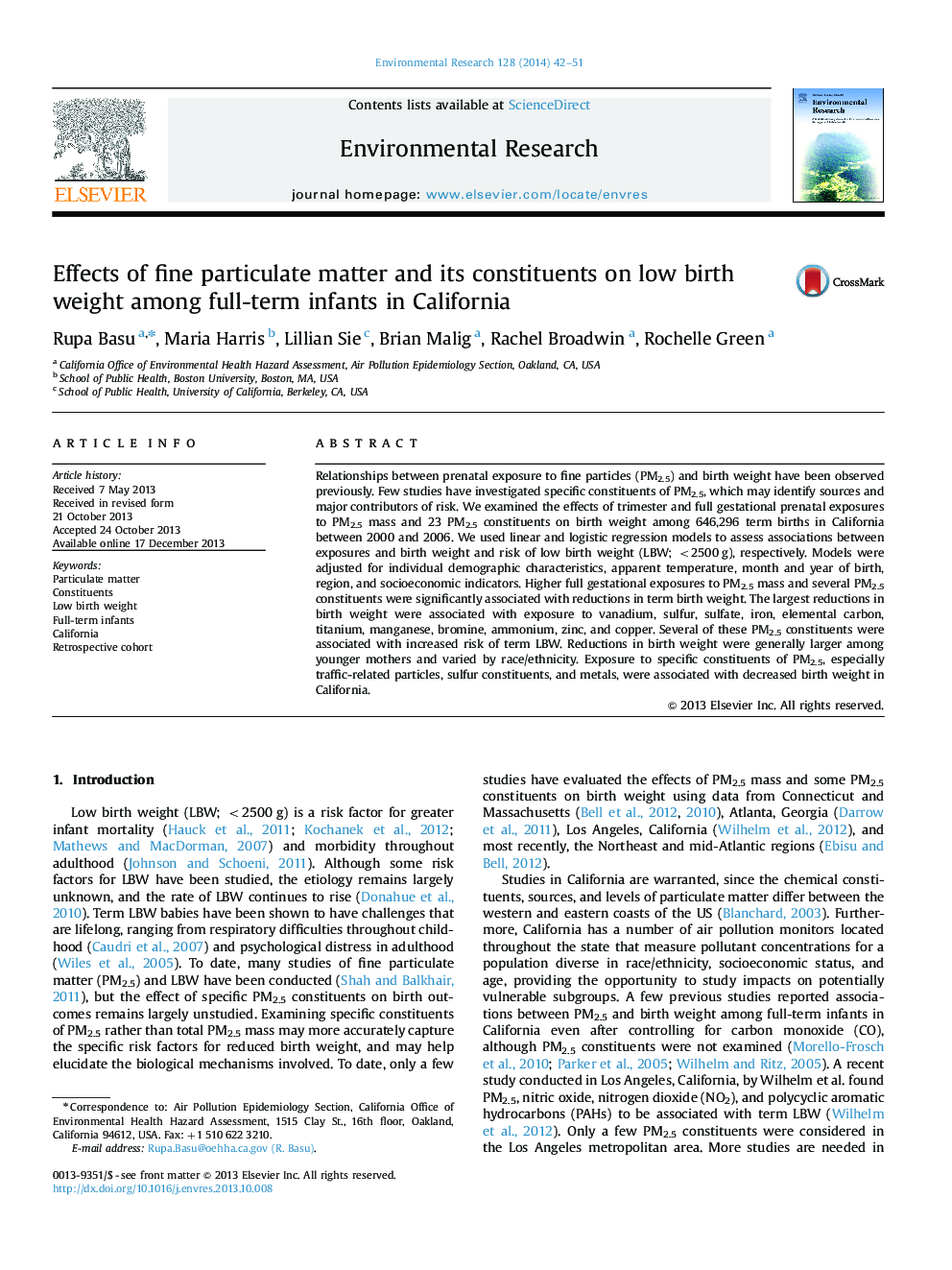| Article ID | Journal | Published Year | Pages | File Type |
|---|---|---|---|---|
| 4469926 | Environmental Research | 2014 | 10 Pages |
•Examine full gestational and trimester fine particle and its constituents on term birth weight.•Fine particles and several of its constituents associated with birth weight reductions.•Largest reductions for traffic-related particles, sulfur constituents, and metals.•Greater birth weight reductions for younger mothers, and varied by race/ethnicity.
Relationships between prenatal exposure to fine particles (PM2.5) and birth weight have been observed previously. Few studies have investigated specific constituents of PM2.5, which may identify sources and major contributors of risk. We examined the effects of trimester and full gestational prenatal exposures to PM2.5 mass and 23 PM2.5 constituents on birth weight among 646,296 term births in California between 2000 and 2006. We used linear and logistic regression models to assess associations between exposures and birth weight and risk of low birth weight (LBW; <2500 g), respectively. Models were adjusted for individual demographic characteristics, apparent temperature, month and year of birth, region, and socioeconomic indicators. Higher full gestational exposures to PM2.5 mass and several PM2.5 constituents were significantly associated with reductions in term birth weight. The largest reductions in birth weight were associated with exposure to vanadium, sulfur, sulfate, iron, elemental carbon, titanium, manganese, bromine, ammonium, zinc, and copper. Several of these PM2.5 constituents were associated with increased risk of term LBW. Reductions in birth weight were generally larger among younger mothers and varied by race/ethnicity. Exposure to specific constituents of PM2.5, especially traffic-related particles, sulfur constituents, and metals, were associated with decreased birth weight in California.
